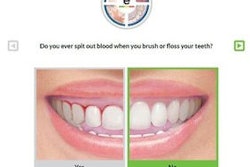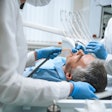
The risk-based medical model instead of a wholesale surgical approach is steadily percolating into undergraduate dentistry programs across the U.S., according to a recent survey (Journal of Dental Education, January 2011, Vol. 75:1, pp. 62-67).
A team from West Virginia University sent questionnaires in the fall of 2009 to all 58 U.S. dental schools. Among the 42 responding schools, 90% reported having a caries risk assessment (CRA) training program for predoctoral students. A 1998 survey by the West Virginia team showed that 81% of schools had such a program in place at the time.
Two other key indicators also showed upticks: the number of CRA training programs that were supervised by one school department -- most commonly restorative dentistry -- at 51% compared with 29% in 1998 (p < 0.05), and the number of schools that had CRA training as a graduation requirement, at 59% versus 36% (p < 0.05). The survey also found an increased emphasis on having CRA as a clinical competency, at 58% versus 38% of responding dental schools in 2009 and 1998, respectively.
Survey says ...
"Using the medical model is done universally in the medical field, and in the dental field that's what we're trying to do; the survey results show it's still a work-in-progress," said lead investigator Jack Yorty, DDS, MA, an associate professor in the department of restorative dentistry at West Virginia University.
“The survey results show it's still a work-in-progress.”
— Jack Yorty, DDS, West Virginia
University
Dr. Yorty said his team conducts these surveys to take the pulse of dental education across the U.S., as a basis for frequently adjusting their own program to remain current. They had a 76% response rate to the initial questionnaire in 1998 and a 69% response rate to the latest one.
Lesion severity, based primarily on clinical/visual examination and x-rays, is still the primary criterion dental students are being taught to use in the decision of whether to restore caries. Most schools -- 58% in 2009 and 60% in 1998 -- charge fees for CRA.
Furthermore, some schools reported using the caries management by risk assessment (CAMBRA) criteria for determining caries severity, while others use the ADA criteria or other systems, including customized approaches.
Becoming the norm
'There is a need for standardization of CRA forms and training among dental schools based on the best available scientific evidence," commented Domenick Zero, DDS, MS, a professor and chair of the department of preventive and community dentistry at the Indiana University School of Dentistry and director of the university's Oral Health Institute.
His school will not make changes based on the survey results, he added. "We have CRA as our focus in our department already, and we are also continuing to improve our CRA training," he said.
Ken Anusavice, DMD, PhD, has written on the importance of shifting to CRA. He said the survey results highlight the current extent of use of CRA.
"The principles of modern caries management are being applied more frequently in recent years compared with a decade ago," said Dr. Anusavice, distinguished professor emeritus in the department of operative dentistry at the University of Florida College of Dentistry. "The paper also shows, though, that very few practitioners record the DMFS [decayed, missing, and filled surface], DFS [decayed and filled surfaces] or DS [decayed surfaces] scores; this is a significant shortcoming of risk-assessment plans."
Copyright © 2011 DrBicuspid.com



















